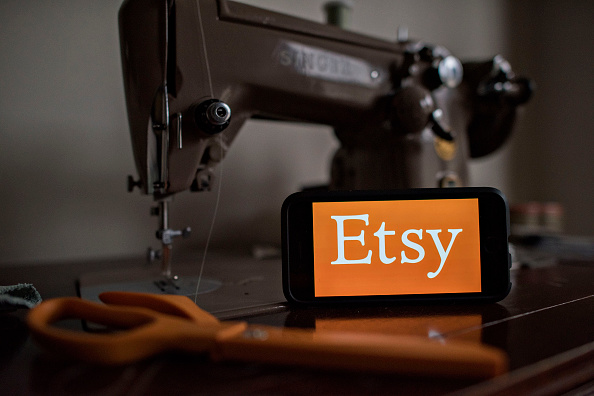
The handcrafted marketplace cited losing its authenticity as a risk factor in its regulatory filing Wednesday.
Etsy, the online marketplace for handcrafted and vintage goods, has filed for an initial public offering that is banking on the continued appetite for new Internet stocks.
Reports speculated that the company could be valued in the public markets at $2 billion. It said in a regulatory filing Wednesday that it hopes to raise $100 million in the offering, although that amount is likely a placeholder.
Etsy, founded in 2005, has ridden the “maker movement” to success, becoming synonymous with handmade crafts online. It has cultivated a devoted community of 1.4 million sellers and 19.6 million buyers, for whom the site is a sort of eBay for everything from reclaimed wood furniture to hand-made terrariums.
Last year, Etsy took in $195 million in revenue, with just over half coming from transaction fees. The rest came from services the sites offers to sellers like promoted listings, payment processing and shipping labels.
The company posted a loss of $15 million in 2014, up from $800,000 in the prior year. In a potentially worrisome sign to potential investors, it said that operating expenses are expected to “increase substantially.”
Etsy retained Goldman, Sachs & Co. and Morgan Stanley as joint book-running managers with Allen & Company as co-manager. It plans to trade on Nasdaq under the symbol “ETSY.”
A few years ago, Etsy lifted some of its stricter sales requirements, including a ban on sellers using certain manufacturing techniques and hiring staff that had been put into place to maintain the site’s homespun image. This gave the sellers that had made their Etsy shops into a full-time job the ability to expand, but critics warned that it might cause the site to lose what makes it special.
Those concerns resurfaced around reports of the company’s public offering. In its filing Wednesday, Etsy noted the importance of “authenticity of our marketplace and connections within our community,” as one of the cornerstones of its business.
“If we are unable to maintain them, our ability to retain existing members and attract new members could suffer,” the company’s regulatory filing said.
CEO Chad Dickerson has long hinted that Etsy might try to avoid the traditional IPO route, followed by the likes of giants like Facebook, Twitter and videocamera maker GoPro. The company is a Certified B Corp, after all, so it technically has a “double bottom line,” which means it must make investors happy while also following more unconventional corporate guidelines that emphasize doing good.
In 2012, Dickerson pointed to SurveyMonkey, the online survey company, as an example of a viable alternative to going public. Rather than sell or IPO, SurveyMonkey underwent an $800 million recapitalization in which it took on debt financing. This allowed the company to pay back its outside investors while remaining private and independent. However, Etsy, which raised almost $100 million in venture backing over the years, has chosen to list itself on Nasdaq.
If successful, Etsy’s IPO will be a win for New York’s tech scene, which has seen its early leaders, blogging service Tumblr and location check-in app Foursquare, sell or struggle to find their way. It would also be a win for its venture investors, Glynn Capital Management, Index Ventures, Union Square Ventures and Accel Partners. Of course, that’s a big if. But how could anyone resist a cat in a handcrafted necktie?
More Must-Reads from TIME
- How Donald Trump Won
- The Best Inventions of 2024
- Why Sleep Is the Key to Living Longer
- Robert Zemeckis Just Wants to Move You
- How to Break 8 Toxic Communication Habits
- Nicola Coughlan Bet on Herself—And Won
- Why Vinegar Is So Good for You
- Meet TIME's Newest Class of Next Generation Leaders
Contact us at letters@time.com